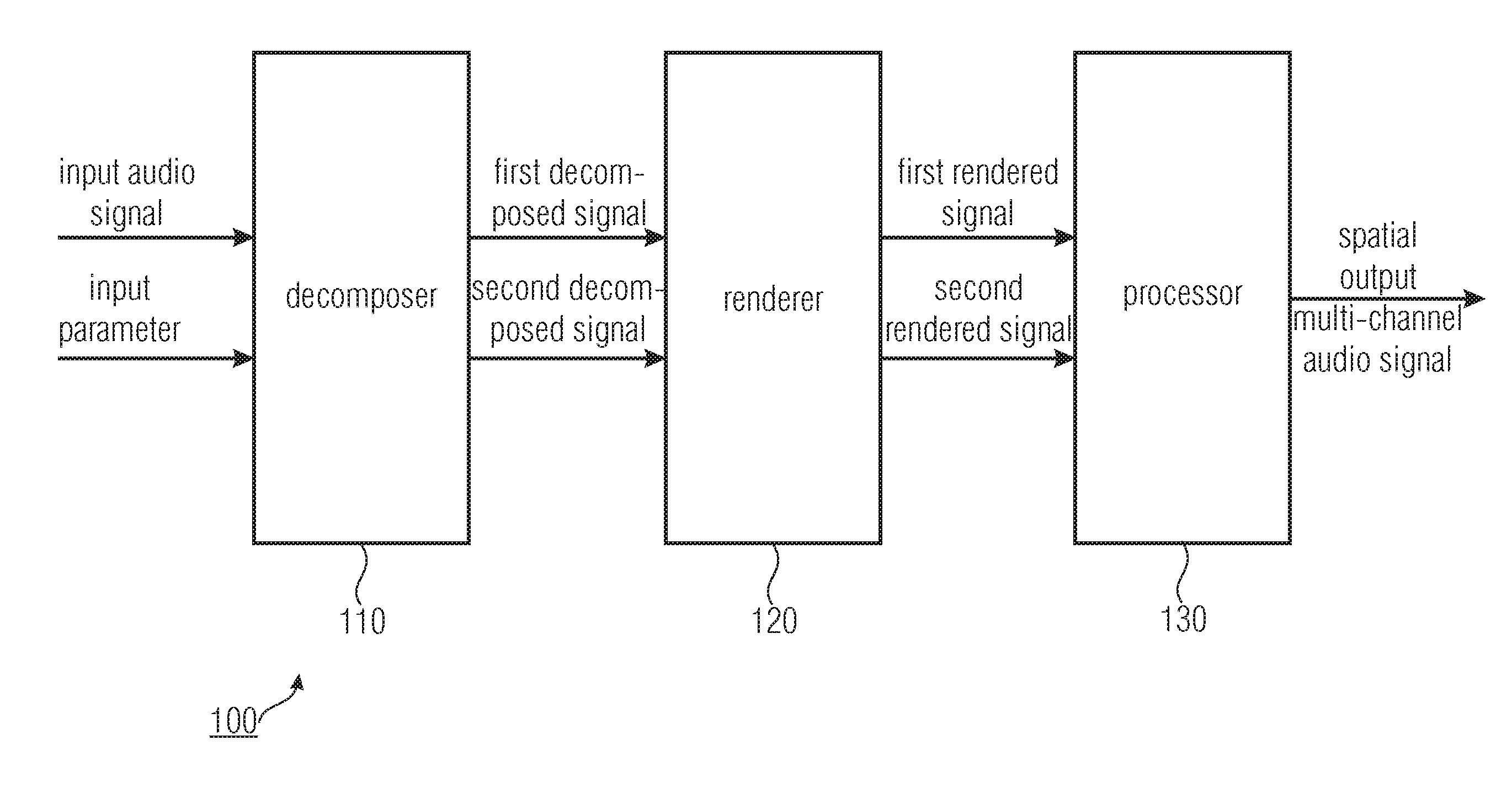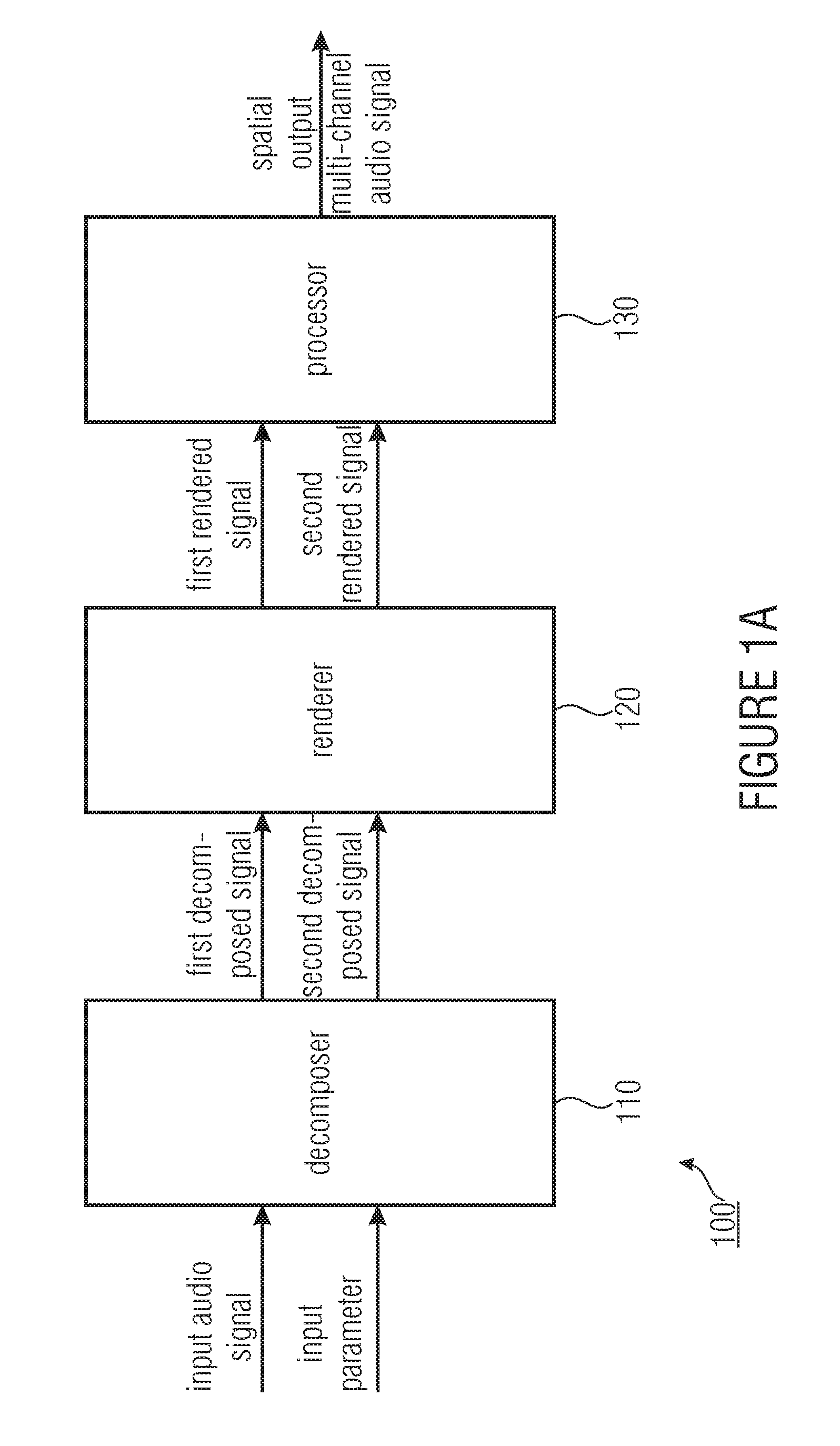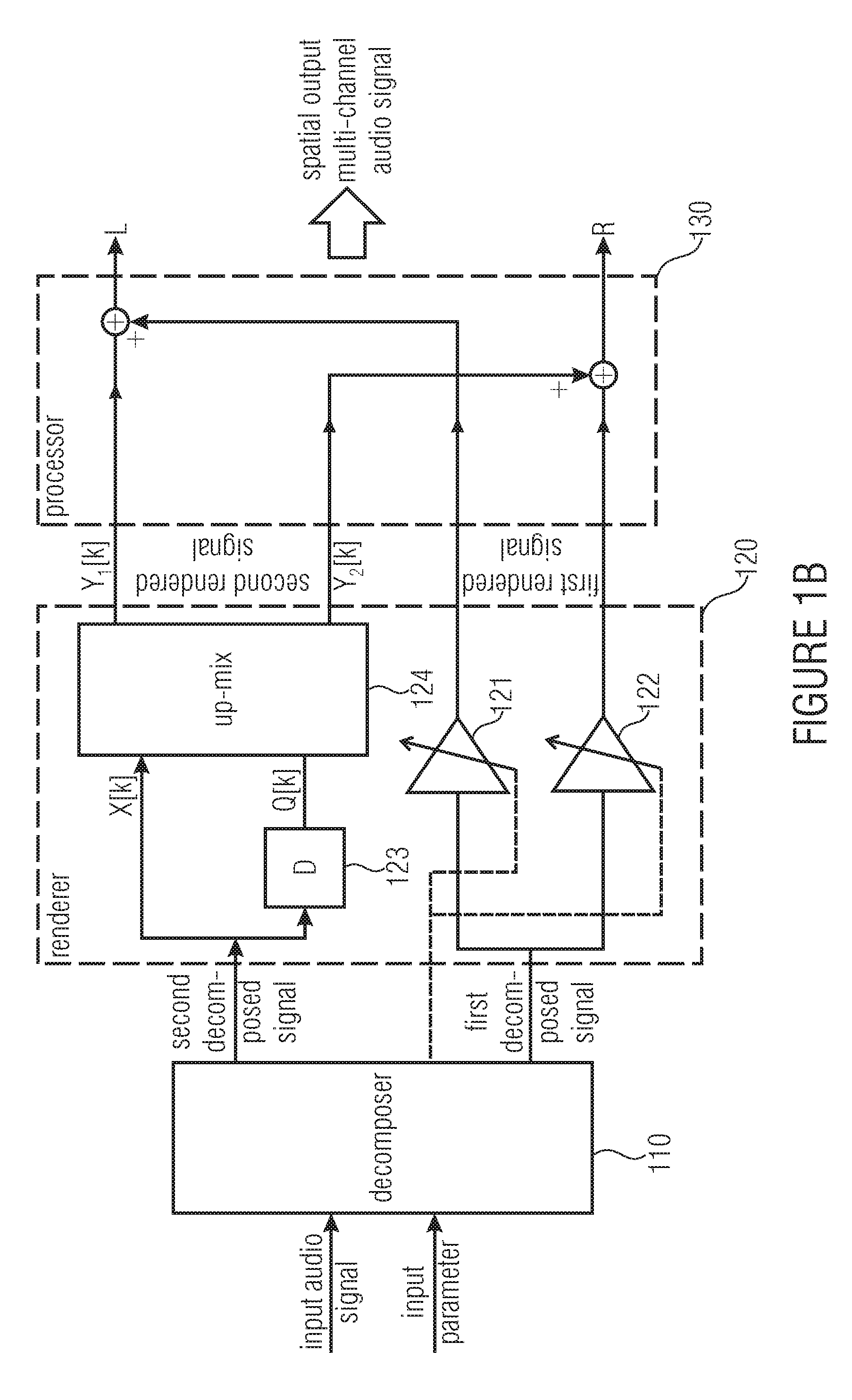Apparatus for determining a spatial output multi-channel audio signal
a multi-channel audio signal and spatial output technology, applied in electrical apparatus, stereophonic systems, stereophonic arrangments, etc., can solve the problems of unsatisfactory perceptual quality, high computational complexity, suitable decorrelation filters, etc., to achieve moderate computational cost, superior perceptual quality of rendered sound, and high perceptual quality
- Summary
- Abstract
- Description
- Claims
- Application Information
AI Technical Summary
Benefits of technology
Problems solved by technology
Method used
Image
Examples
Embodiment Construction
[0036]FIG. 1 shows an embodiment of an apparatus 100 for determining a spatial output multi-channel audio signal based on an input audio signal. In some embodiments the apparatus can be adapted for further basing the spatial output multi-channel audio signal on an input parameter. The input parameter may be generated locally or provided with the input audio signal, for example, as side information.
[0037]In the embodiment depicted in FIG. 1, the apparatus 100 comprises a decomposer 110 for decomposing the input audio signal to obtain a first decomposed signal having a first semantic property and a second decomposed signal having a second semantic property being different from the first semantic property.
[0038]The apparatus 100 further comprises a renderer 120 for rendering the first decomposed signal using a first rendering characteristic to obtain a first rendered signal having the first semantic property and for rendering the second decomposed signal using a second rendering charac...
PUM
 Login to View More
Login to View More Abstract
Description
Claims
Application Information
 Login to View More
Login to View More - R&D
- Intellectual Property
- Life Sciences
- Materials
- Tech Scout
- Unparalleled Data Quality
- Higher Quality Content
- 60% Fewer Hallucinations
Browse by: Latest US Patents, China's latest patents, Technical Efficacy Thesaurus, Application Domain, Technology Topic, Popular Technical Reports.
© 2025 PatSnap. All rights reserved.Legal|Privacy policy|Modern Slavery Act Transparency Statement|Sitemap|About US| Contact US: help@patsnap.com



